Our analysis demonstrates that many ZIP Codes on the South Side still have relatively low vaccination rates for first doses, even though a disproportionately large percentage of their residents are essential workers eligible for the vaccine, according to the most recent data on where Chicago’s workforce resides.
The current vaccination Phase, 1b, expanded vaccine eligibility from exclusively healthcare workers and staff in long-term care facilities to broader swaths of frontline essential workers. City officials define essential workers as correctional workers and first responders; grocery store workers and workers in manufacturing settings where outbreaks have occurred; daycare, K-12, and early education workers; public transit; other manufacturing and agriculture workers; government and postal workers; and caregivers of medically fragile children or adults.
Chicago’s three largest industry groups are education, healthcare, and social assistance; professional, scientific, administrative, and management; and arts, entertainment, accommodation, and food. The first phase of vaccination covered healthcare workers and caregivers, while the current phase includes teachers and many food-related jobs.
Yet, it’s worth noting that restaurant workers and other frontline employees in the food sector are in Phase 1c of the rollout and are not yet eligible for the vaccine, despite restaurants and bars currently being permitted to operate at fifty percent capacity.
Therefore, we became interested in mapping Chicago’s grocery store workers since they are in of the largest sectors eligible for the vaccine in 1B and—by our calculations—tend to live on the South and West Sides.
But it wasn’t so straightforward.
The Chicago Department of Public Health (CDPH) published maps showing where many essential workers live, but did not include one for grocery store workers, whose direct contact with customers likely heightens their risk for COVID-19, studies show.
CDPH estimates that there are 17,000 residents across the city who work in grocery stores or in food-related workplaces, though it is not clear how they calculated that number. That’s why we ran the numbers to see where the largest concentrations of Chicago’s grocery store workers live and what percentage of their neighborhoods have been vaccinated.
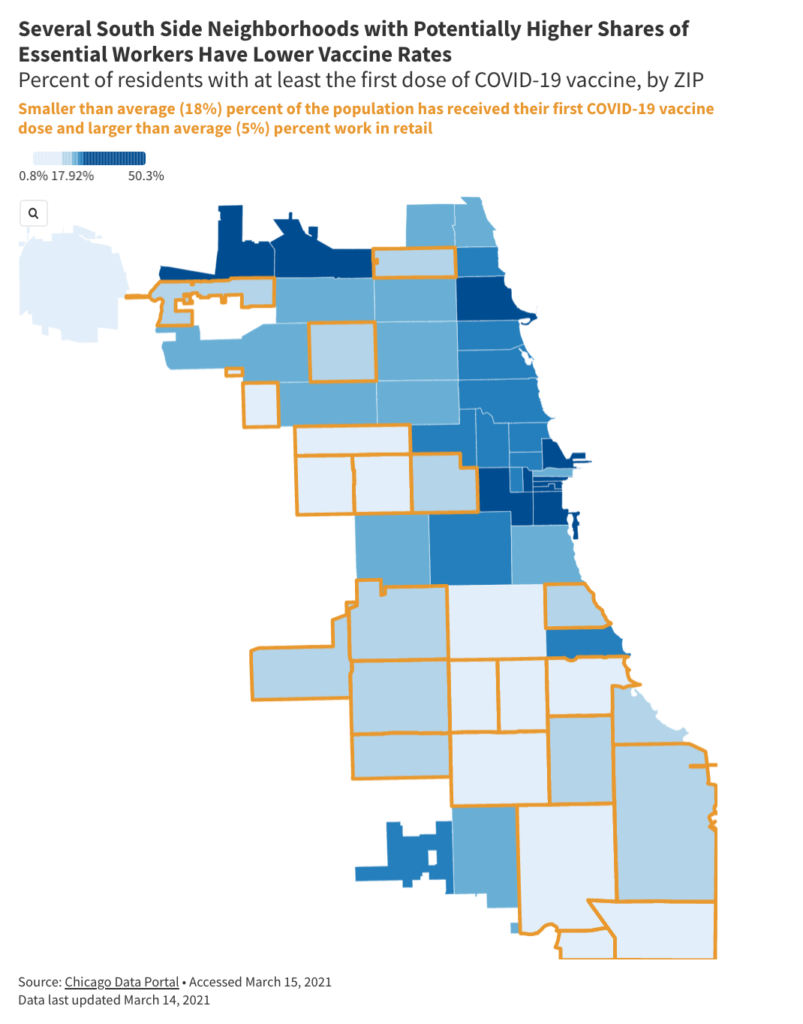
On the same day that Phase 1b began—and that South Side Weekly launched its vaccine Twitter bot revealing that South and West Side communities were being left behind—the City also launched Protect Chicago Plus, a campaign to increase vaccine distribution equity by targeting fifteen community areas that have been hit hardest by the pandemic.
The heart of the City’s equity strategy is a “vulnerability score” that the CDPH developed to decide which community areas to target for increased vaccine distribution. The formula is based on multiple components related to sociodemographic risk (e.g., percent of individuals living with a disability or experiencing poverty), epidemiological risk (e.g., percent of the population over 65 years old or who have diabetes), and occupational risk (e.g. percent of the population employed as essential workers).
The U.S. Census Bureau collects occupation data that describe what workers do at their primary job. There are 569 specific occupational codes that are broadly categorized into 23 major groups. Separately, the federal government uses the North American Industry Classification System (NAICS) to classify the kind of business conducted by an employer.
If a grocery store worker, for example, was mainly a cashier or a first-line supervisor, their occupation code would fall under “sales and related occupations.” If they worked in a bakery within a grocery store, their work would likely be categorized by the Census Bureau under the service occupations umbrella as “food preparation and serving.” A grocery store worker would be listed under the broadest NAICS industry category of “retail trade,” as would a supervisor at a clothing store or an accountant for an electronics store.
According to a January 25 report on the COVID-19 Community Vulnerability Index (CCVI), CDPH used Census Bureau data on occupation—but not industry—to determine what percent of a community area worked as essential workers. The report’s list of essential workers aligns closely to CDPH’s definitions, except for grocery store workers, who are defined as “[b]aggers, cashiers, stockers, pick-up, customer service, those working in feeding or at food pantries” on CDPH’s website. But the CCVI report categorizes grocery workers under “material moving” occupations, along with examples such as “laborers” and “freight” workers.
In our analysis, we used American Community Survey (ACS) data to estimate where grocery workers might live—but as opposed to the city’s health officials, we looked at both industry and occupation.
We used codes for workers whose work is labeled “sales and office occupations” within the “retail trade” industry. This not only includes grocery cashiers, but also workers like salespeople in clothing stores and customer service representatives in electronics stores.
Nearly nine percent of Chicago’s civilian employed population—over 114,900 people —work in retail.
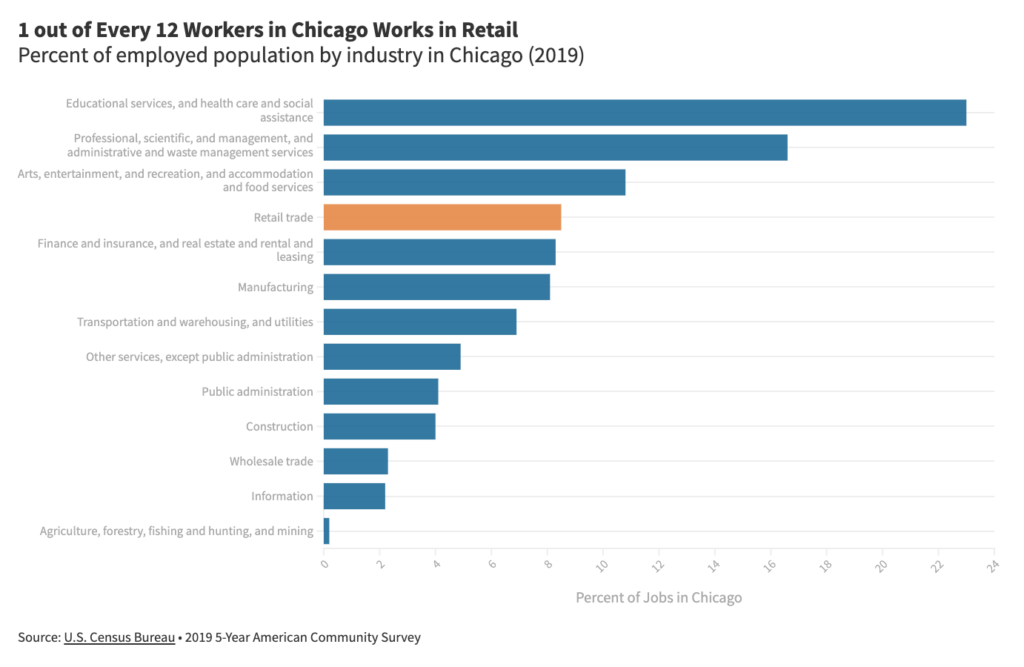
Workers in retail sales jobs are most concentrated along the West and South Sides of the city. The three ZIP Codes with the highest shares of these kinds of workers are 60633, 60652, and 60636. They include the Englewood, South Deering, and Ashburn community areas.
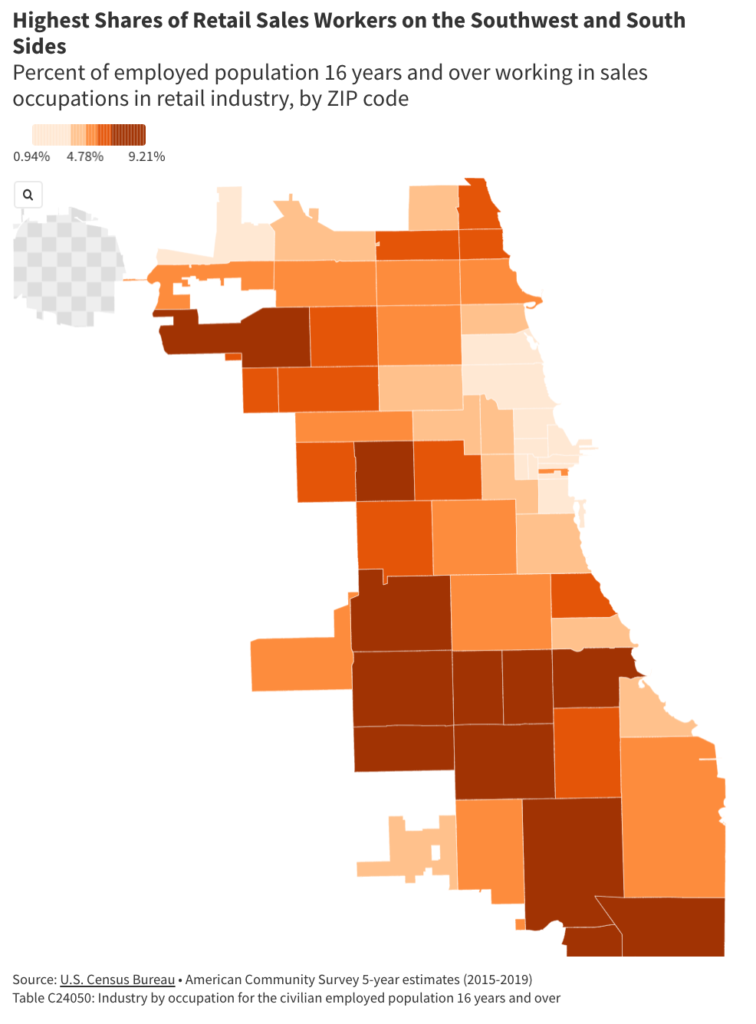
Englewood and South Deering are high-priority areas for vaccine equity, according to the CCVI report, but their ZIP Codes remain on the lower end of the vaccination data. The city’s newest mass vaccination site, the United Center, is prioritizing nine ZIP Codes on the West and South Sides, and five of them—60619, 60620, 60624, 60644, and 60652—have disproportionately high shares of sales workers in retail.
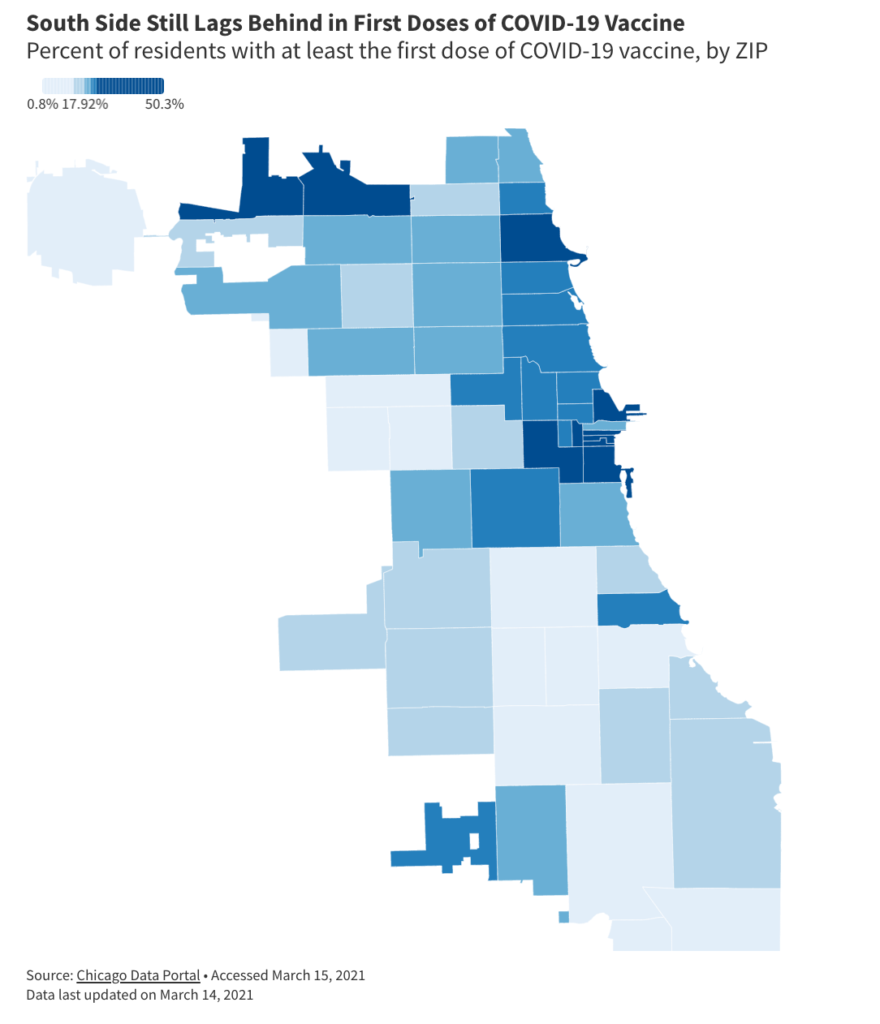
More broadly, West Side ZIP Codes have seen steady increases in the percentage of residents with at least the first dose of the vaccine since Phase 1b launched; but many South Side communities have not.
We looked at residents who have received at least their first dose of a COVID-19 vaccine instead of those who have had both (i.e., are “fully” vaccinated) because of how vaccine doses are staggered; we didn’t want our maps to lag behind current vaccination efforts.
Still, we found that several South Side ZIP Codes that encompass or contain Protect Chicago Plus community areas are still reporting less than fifteen percent vaccinated with their first dose. According to the Weekly’s COVID-19 tracker, neighborhoods like South Shore, West Englewood, and Back of the Yards have some of the highest rates of COVID-19 deaths per capita in the city.
As of publication, Chicago has vaccinated nearly 393,000 residents—almost fourteen percent of the population—with at least a first dose. About ten percent are fully vaccinated. As the city continues to roll out its vaccination strategy, it will be critical to ask at every phase who is still being left behind.
Charmaine Runes is a graduate student at the University of Chicago’s Computational Analysis and Public Policy program. She last wrote about the city’s annual count of people experiencing homelessness.



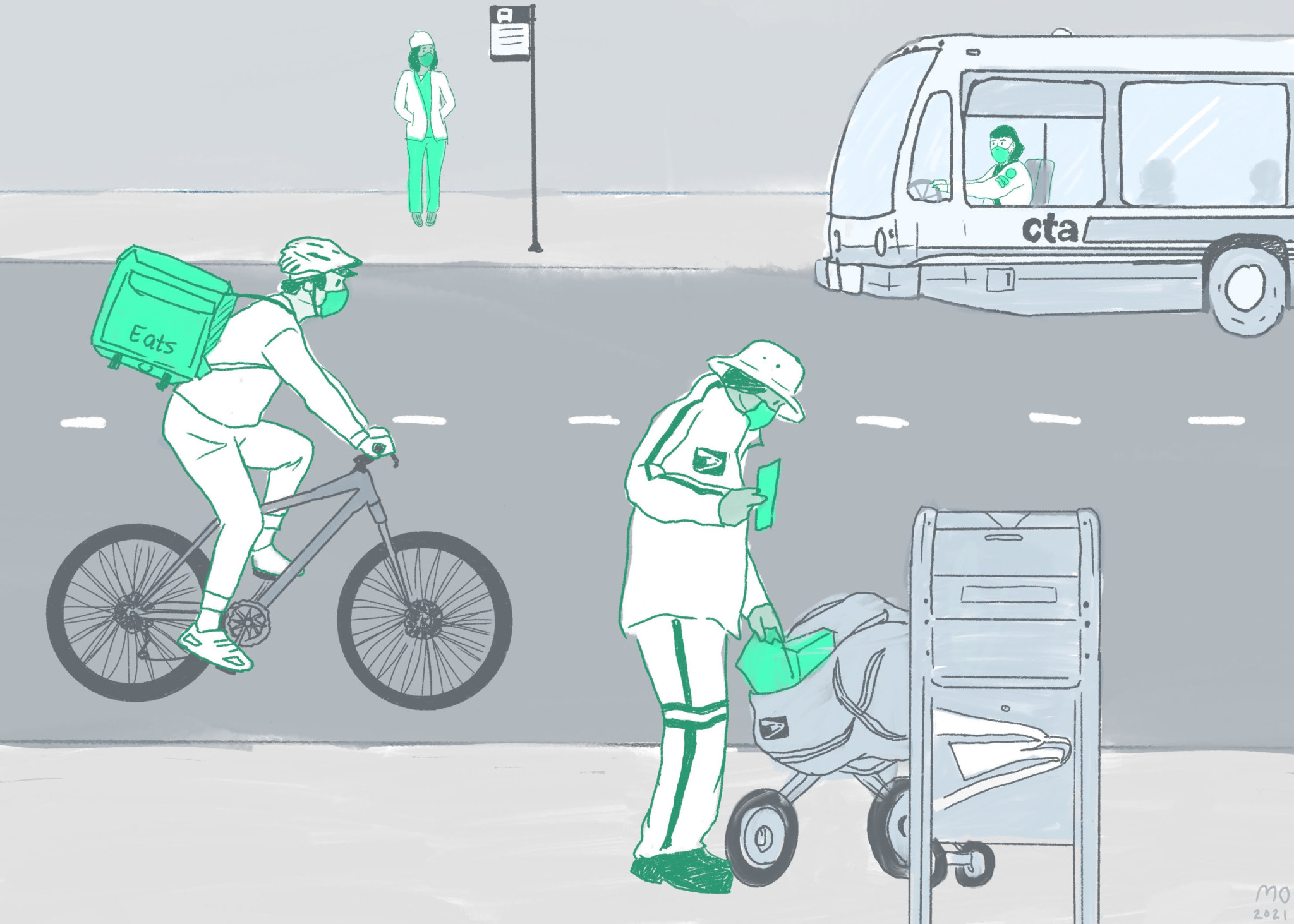
I think you also need to ask the question how many of these employees were given the opportunity to get the shot via a code and did not take advantage of it by their own choice. I know a small grocery store owner who’s employee did not want the shot for a various of reasons. Helping these individuals understand the importance of getting the vaccine or understanding why it is they have chosen to not the get the shot needs to be addressed
Is there any way we can help get vaccines to frontline workers residing in the south and west neighborhoods?